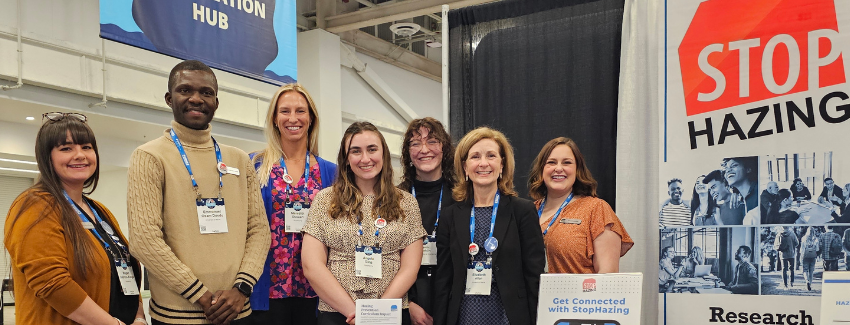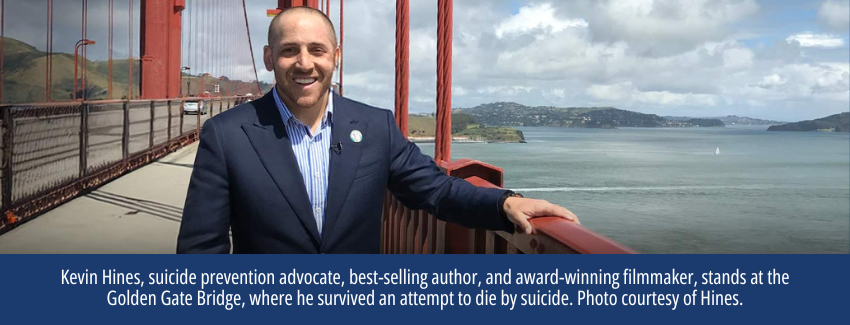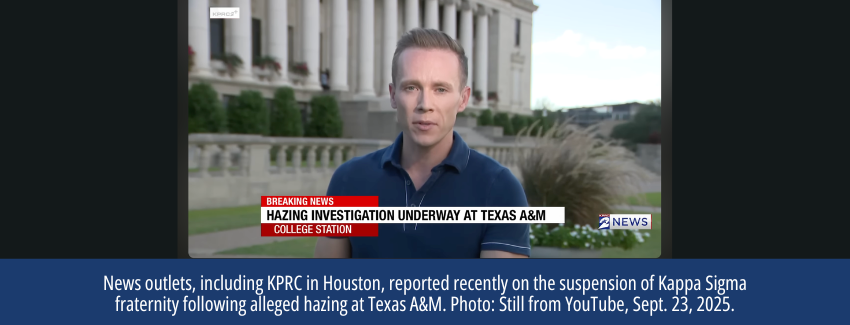Landmark study of college hazing to get its first update in 17 years
The new National Study of Student Hazing will survey thousands of college students for a comprehensive view of hazing on college campuses
Donate here to help fund the new National Study of Student Hazing
***
The nation’s first comprehensive study of college hazing in 2008 painted a disturbing portrait of a college experience where “hazing is woven into the fabric of student life and campus culture,” the study’s authors wrote.
That landmark study—now nearly 17 years old— is about to get its first update, led by the same researcher who spearheaded the original report.
The new National Study of Student Hazing will be led by Elizabeth Allan, professor of higher education at the University of Maine College of Education and Human Development. Allan has dedicated most of the past two decades to hazing research and prevention.
“So much has changed in those years,” Allan said. “Student mental health concerns, the pandemic, the growth of social media, how people interact and communicate.”
“Having updated data will give us an opportunity to once again shine a spotlight on hazing and campus culture and to help create and refine research-informed tools to help end hazing,” she said.
A comprehensive, and unsettling, picture of hazing
The original 2008 study was sweeping in scope. Nearly 11,500 undergraduate students from 53 four-year colleges and universities responded to the survey.
The research team also completed more than 300 in-depth interviews with students and campus professionals.
Their findings were concerning:
- 55% of college students who participated in groups, teams, or clubs experienced hazing.
- 74% of student athletes experienced some form of hazing.
- 95% of students who experienced hazing didn’t report it.
- 69% of students said they were aware of hazing in organizations other than their own.
- 25% of coaches or organization advisers were aware of the group’s hazing behaviors, and in 25% of hazing experiences, alumni were present.
- 90% of students who experienced hazing behavior in college did not consider themselves to have been hazed.
The results of that study have been cited hundreds of thousands of times in publications, policy briefs, presentations, and news articles.
New study to survey thousands of college students and campus pros
For the new study, Allan and her research team expect to work with up to 70 US colleges and universities to launch an online student survey in spring 2026 of thousands of college students about their experiences with hazing.
“We know it’s still happening across different teams, clubs, and organizations,” Allan said. “We need another comprehensive snapshot to fill in the gaps.”
The research team will spend the coming months refining the survey, recruiting participant schools, and preparing for the massive amount of data they’ll receive. The first results could be available by fall 2026.
Study focuses on campus culture
Several new elements will be added to the updated study. Community colleges will be included this time. “We’re hearing that hazing may be happening there, which makes sense since we know hazing is happening in high schools,” Allan said.
Researchers will also work to gather more data from historically Black colleges and universities to get a better picture of hazing on those campuses.
Also new this time: a national survey of campus professionals, including deans of students, coaches, campus safety officers, health and well-being staff, and fraternity and sorority life advisers.
That survey will seek to understand the current state of staff training in hazing prevention and how well prepared campus staff are to implement hazing prevention strategies—information that will help inform the development of new professional development tools.
Having well-trained campus staff is especially critical now that the newly enacted Stop Campus Hazing Act is the law, with its new requirements for research-based hazing prevention education and transparency about hazing incidents, Allan said.
One thing that’s not changing is the study’s focus on campus culture. “Hazing is a campus community issue, and if we’re going to prevent it, we need to look at what’s happening in the larger campus culture that may help mitigate or reinforce hazing behaviors,” Allan said.
A $1 million fundraising goal for the study
Why has it taken so long to update the 2008 study? Primarily because of a lack of funding for hazing prevention research.
Allan recently launched the Hazing Prevention Research Lab at the University of Maine and is working to raise $1 million to finance the new hazing study.
So far, private donations have come from the families of hazing victims as well as Allan’s colleagues and contacts.
You can donate here to support the study and the Hazing Prevention Research Lab at the University of Maine.
New data will support science-based hazing prevention tools
In addition to leading the national hazing study, the new Hazing Prevention Research Lab will develop evidence-based approaches and resources to reduce campus hazing, working in partnership with StopHazing.org, a research organization Allan founded.
“We need this data. It’s so long overdue,” said Meredith Stewart, StopHazing’s operations manager.
“The student experience is not the same as it was in 2008, and it’s important to know what it looks like now,” Stewart said.
“Ultimately, we‘re talking about student belonging and well-being. Being part of groups, teams, and clubs is part of their whole college experience, and it should be healthy and promote development of life skills and leadership,” Stewart said.
.jpg?width=1200&length=1200&name=HPC%20Summit-3-EDIT%20(1).jpg)




